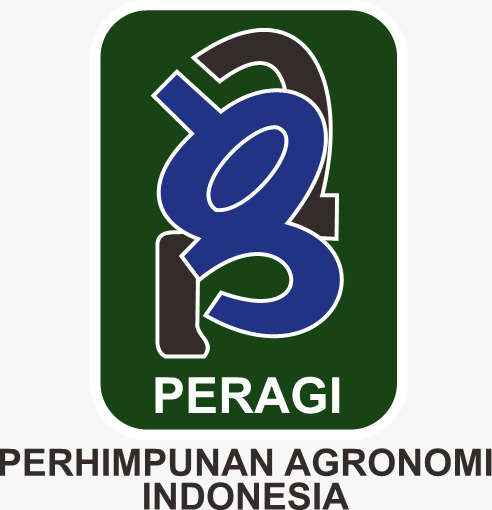Evaluation of the Insecticidal Activity of Lerak-Based Surfactant and Mahogany (Swietenia macrophylla) and Sugar Apple (Annona squamosa) Seed Extracts with Different Solvents on Spodoptera frugiperda Mortality
Abstract
Spodoptera frugiperda is an invasive maize pest that inflicts significant damage. The excessive use of chemical insecticides poses risks to the environment and human health, highlighting the need for eco-friendly alternatives. This study evaluated the effectiveness of soapberry (Sapindus rarak) surfactant combined with mahogany (Swietenia mahagoni) and sugar apple (Annona squamosa) seed extracts, utilizing methanol and hexane solvents, against S. frugiperda mortality. The research was conducted in a screen house at the Faculty of Agriculture, University of North Sumatra, from June 2024 to January 2025, employing a Randomized Complete Block Design with three replications and nine treatments. The observed parameters included larval mortality, pupal and adult emergence, and Lethal Time 50 (LT50). The treatment using sugar apple seed extract with 80 ml of methanol and 10 ml of soapberry surfactant demonstrated the highest mortality rate and significantly inhibited larval development. The addition of soapberry surfactant enhances the effectiveness of the extracts by improving their spread on leaf surfaces. This botanical insecticide shows promise as an eco-friendly alternative for controlling S. frugiperda; however, further research is necessary for field testing and formulation optimization.
Downloads
References
Analisa, W., Fahrurrozi, & Sempurna, G. (2022). Effectiveness of various botanical insecticides on major pests of conventionally grown sweet corn. Journal of Agriculture, 33(3), 359–368.
Budiman, H. (2016). Organic corn cultivation of new varieties in high demand. Pustaka Baru Press.
CABI. (2019). Community-based fall armyworm (Spodoptera frugiperda) monitoring, early warning, and management: Training of trainers manual (1st ed., 112 pp.).
Chompoo, J., & Pornprom, T. (2018). RT-PCR based detection of resistance conferred by an insensitive GS in glufosinate-resistant maize cell lines. Pesticide Biochemistry and Physiology, 90, 189–195.
Herminanto, T., Sutanto, S., & Putri, N. (2004). Efek subletal campuran ekstrak daun srikaya (Annona squamosa L.) dan rimpang kunyit (Curcuma domestica Val.) terhadap larva Spodoptera litura F. Jurnal Lentera Bio, 2(1), 107–112.
Kementerian Pertanian. (2019). Introduction of fall armyworm (Spodoptera frugiperda J.E. Smith): A new pest of corn plants in Indonesia (52 pp.). Cereal Crops Research Institute.
Kusumaningtyas, E., Widiati, R., & Gholib, D. (2008). Inhibitory activity of Piper betle leaf extract and cream against Candida albicans and Trichophyton mentagrophytes. National Seminar on Livestock and Veterinary Technology, Yogyakarta.
Lembang, D. T., Daniel, & Chairul, S. (2020). Phytochemical screening and antioxidant activity of fractionated extracts of Peperomia pellucida. Atomik Journal, 5(1), 37–42.
Maslahat, M., Lusiana, H., & Farobie, O. (2017). Isolasi dan elusidasi senyawa alkaloid dalam biji mahoni (Swietenia mahagoni Jacq). Jurnal Sains Natural, 2(1), 35–40.
Megasari, D., Ichsan, L. I. D., Nanda, D. M., Aulia, W., & Khusnul, K. (2022). Biology of Spodoptera frugiperda J.E. Smith on various host plants in the laboratory. Agrovigor, 15(1), 63–67.
Mukhtar, M., Mustafa, G., & Ahmad, M. (2022). Plant-derived limonoids as potential biopesticides: Modes of action and targets. Pesticide Biochemistry and Physiology, 182, 105014.
Rahmawati, E., Maria, K. N., & Johannes, J. P. S. (2021). Effectiveness of clove leaf extract (Syzygium aromaticum) as mosquito repellent for Aedes sp. The Journal of Environmental Health Research, 4(2), 38–44.
Sudarsono. (2002). Medicinal plants in Indonesia. Food and Drug Supervisory Agency of the Republic of Indonesia.
Trisyono, Y. A., Suputa, Aryuwandari, V. E. B., Hartaman, & Jumari, M. (2019). Occurrence of heavy infestation by the fall armyworm Spodoptera frugiperda, a new alien invasive pest, in corn in Lampung Indonesia. JPTI, 23(1), 156–160.
Wisnu, S. A. K., & Heni, P. (2012). Larvicidal activity of sugar apple seed extract (Annona squamosa) against Culex quinquefasciatus larvae. Journal of Vector-borne Diseases Research, 4(1), 21–26.
Yunarti, M. G. C., Widiarnako, B., & Sunoko, H. R. (2013). Farmers' knowledge levels in pesticide use. In Proceedings of the National Seminar on Natural Resources and Environmental Management, Diponegoro University, Semarang.
Copyright (c) 2025 Tiara Maharani, Marheni, Darma Bakti

This work is licensed under a Creative Commons Attribution 4.0 International License.
Authors who publish with Jurnal Agronomi Tanaman Tropika (JUATIKA) agree to the following terms:
Authors retain copyright and grant the Jurnal Agronomi Tanaman Tropika (JUATIKA) right of first publication with the work simultaneously licensed under a Creative Commons Attribution License (CC BY 4.0) that allows others to share (copy and redistribute the material in any medium or format) and adapt (remix, transform, and build upon the material for any purpose, even commercially) with an acknowledgment of the work's authorship and initial publication in Jurnal Agronomi Tanaman Tropika (JUATIKA).
Authors are able to enter into separate, additional contractual arrangements for the non-exclusive distribution of the journal's published version of the work (e.g., post it to an institutional repository or publish it in a book), with an acknowledgment of its initial publication in Jurnal Agronomi Tanaman Tropika (JUATIKA). Authors are permitted and encouraged to post their work online (e.g., in institutional repositories or on their website) prior to and during the submission process, as it can lead to productive exchanges, as well as earlier and greater citation of published work.







 More Information
More Information



